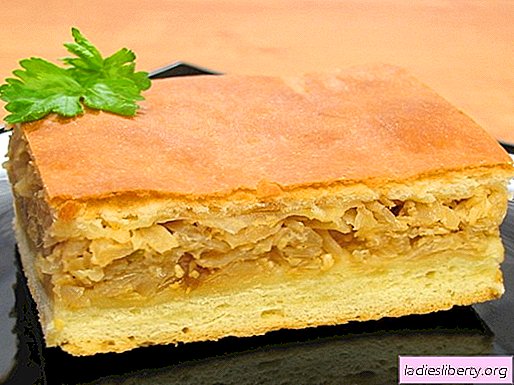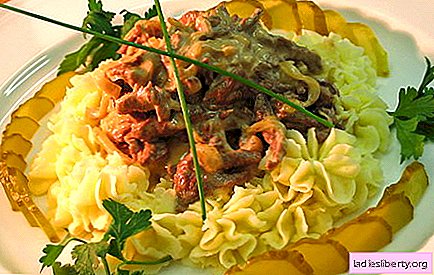
They say that if a cold is treated, then it will pass in a week, but if not treated, then in seven days! What to do to those who chose the first path? Surrender to the doctor and increase revenue at the nearest pharmacy or try free and available folk remedies.
Traditional medicine for centuries collects bit by bit recipes from various ailments. Effective ones are passed down from generation to generation, sometimes they are able to compete in the results of treatment with official pharmacological agents. There are many recommendations for getting rid of a cold. Let's try to highlight among them useful, suitable for use and warn against the use of extreme techniques that can cause harm.
Runny nose
A runny nose is an outflow from the nasal passages of the mucous or purulent discharge, which is a consequence of the overproduction of secretion by the mucous membranes of the nose and adnexa. The symptom appears when infectious agents, allergens or foreign bodies get into the nose.
Normally, a certain amount of secretion is constantly formed in the nose and performs the function of enveloping, moisturizing, protecting the delicate mucous membranes. Under the influence of aggressive factors, inflammation develops in the tissues, and the mechanisms of local immunity are activated. The result of the protective processes is edema, hyperemia of the membranes, rhinorrhea. Separated by the viral and allergic nature of the common cold, it looks transparent and liquid, with bacterial lesions - cloudy, purulent, thick. Runny nose can occur from the nasal cavity, paranasal sinuses, be a symptom of adenoiditis. The approach to treatment depends on the etiology of the disease.
All folk remedies for the common cold can be divided into groups according to the method of application: drops, nose washing, inhalation, rubbing, warming, reflex effects.
Drops
Solutions of active substances, decoctions of herbs, plant juices of 2-5 drops are introduced into each nasal passage 3-10 times a day.
The most common recipes:
1. Nasal instillation sea water or saline, 4 to 5 drops every 2 hours. Helps to remove edema, improve nasal breathing, facilitates the passage of mucus.
2. Solution tea sodaprepared from the calculation of a teaspoon in a glass of water. Dripped by 2-3 drops 3-4 times a day. Dries mucous membranes, relieves edema.
3.Table Spoon honey soluble in 200 ml of water. 2 to 3 drops are made in each nasal passage up to 5 times a day. Reduces swelling of tissues, contributes to their recovery.
4.Aloe juice in half with saline is instilled 2 to 3 times a day to relieve inflammation, stimulate regeneration.
5. Garlic juice 1: 20 with water, 2 drops 3 times a day. It has an antiviral effect due to the content of volatile.
6.Kalanchoe juice used as an anti-inflammatory, antimicrobial, nose cleanser. Irritating receptors, causes sneezing, mucus discharge. Drip a few drops 3 times a day.
7.Beet or carrot juice 2 drops 3 times a day. Contains vitamins A, C. Improves the condition of the mucous membrane. The effect for the treatment of the common cold is doubtful.
Rinsing
Folk remedies for the common cold often involve rinsing the nose. According to the application technique, the most correct and safe process will be when the fluid enters the nasal cavity and flows out of it through the other nostril by gravity, without pressure. This method is rooted in the practice of Indian yogis. The head is tilted forward and to the side, the therapeutic solution is directed by gravity into the upper nasal passage. Then the position of the head is changed, giving it a slope to the other side. The temperature of the liquid should be about 40 degrees. The number of procedures per day is 2 - 3.
For washing, you can use:
1. Sea water or table salt solution a teaspoon in a glass of water. You can use pharmacy saline. The nose is freed from the contents, the edema leaves.
2. A decoction of calendula 1 tablespoon of crushed raw materials per 200 ml. Aged in a water bath for 15 minutes, cools, filtered. Relieves inflammation, cleanses the nose of snot.
3. A decoction of chamomile. Prepares in the bath for 15 - 20 minutes at the rate of a tablespoon of flowers in a glass of water. It has anti-inflammatory, drying properties.
4. A decoction of bay leaves. It has anti-allergic, disinfecting effect. It is brewed traditionally.
Contraindication to lavage of the nose is otitis media, frequent nosebleeds, curvature of the septum, the presence of polyps.
Inhalation
Inhaling the smallest particles of medicinal substances can help with rhinorrhea. There are several rules that must be observed: inhalation should be through the nose, exhale through the mouth; procedures are carried out between meals; after inhalation for 15 minutes you need to be at rest in a warm room; steam treatment is prohibited at high temperatures. The inhalation time is 3-5 minutes. The number of procedures per day is recommended up to 5 times.
Recommended recipes:
1. Steam inhalation over boiled potatoes, covering his head with a towel. The old way. From a warm steam, the nose is temporarily cleared from the contents. It is important that the temperature of the steam is comfortable and does not burn the airways.
2. Inhalation of vapors of hot soda solution prepared from the calculation of a teaspoon of soda in 200 ml of water. The mucous membranes are dried, the contents are better.
3. Breath over a decoction of bay leaves. A glass of boiling water needs 2 tablespoons of chopped lavrushka. It is steamed for 15 minutes and is used for warm inhalations. Light antibacterial, antiallergic agent.
4. A decoction of chamomile or calendula is prepared. Take 2 tablespoons of raw materials per glass of water. It has anti-inflammatory, emollient, drying properties.
5. A decoction of eucalyptus tablespoon of 200 ml. Inhalation clears the nose well.
6. Inhalation of the vapors of chopped garlic, onions, horseradish accelerates the healing process due to the presence of a large number of volatile products.
Rubbing
Rubbing the nose, wings of the nose, forehead, the area of the canine fossa, and temples can play a positive role in the treatment of the common cold. With dry grinding, there is an improvement in blood circulation in the underlying tissues, a greater number of biologically active cells and humoral substances are brought into the foci of inflammation. This speeds up the healing process.
When used for grinding honey, fir, pine, eucalyptus oil, the effect is enhanced by elements of inhalation and local reflex exposure.
Warming up
Folk remedies for the common cold recommend using warming up local and general effects. Assigned 1 to 2 times a day. Recipe examples:
1. Applying warm chicken eggs to the nose and maxillary sinuses for 3 to 5 minutes.
2. Boil the potatoes in their skins. Warm up the nose with two potatoes.
3. Heat salt, sand, buckwheat in a pan, pour into a linen bag, apply to the nose.
4. Steam your feet in hot water for 7 to 10 minutes. It is possible to add dry mustard or table salt to the water.
5. Keep hands in hot water for 5 - 7 minutes.
Reflex effects
The impact on biologically active points is used in traditional medicine in many countries. When influencing certain areas of the body, positive changes in the affected structures occur reflexively. For the nose, this area is the foot. A variety of irritating effects on the feet contribute to the activation of blood circulation in the nasopharynx, increase local and general immunity.
Some helpful suggestions:
1. Careful rubbing of the soles with a hard brush, rough cloth until redness and the appearance of a sensation of heat in the feet 2 to 3 times a day.
2. Rubbing the feet, calf muscles with skin irritating ointments at night.
3. Putting on woolen socks at night with mustard poured inside.
4. Mustard plasters before going to bed on the feet, back surface of the lower leg.
5. Walking on a prickly rug, mowed grass.
Bad advice
As a folk remedy for the common cold, they sometimes recommend dangerous measures that can lead to dangerous complications or harm.
These recipes include laying in the nose slices of garlic or onions. The advice is dangerous for getting burns, irritation of the mucous membranes and deepening the bookmarks, getting vegetables into the respiratory tract.
It is sometimes recommended to inhale the smoke of smoldering rags or smoldering bread to get rid of a cold. Nothing but contamination and irritation of the mucous membranes this action will entail.
Processing the nasal passages with laundry soap can lead to damage, burns to tissues, and disrupt normal microflora.
Instillation of coniferous, pine, eucalyptus oil in concentrated form in the nose or the use of aromatic oils in high concentrations for inhalation can provoke serious allergic reactions.
You can use folk remedies for the common cold at the very beginning of the disease, if it occurs in a mild form, or during the period of convalescence. It is advisable to consult with your doctor first.
In the presence of high temperature, purulent discharge from the nose, the presence of pain in the forehead, canine fossae or in the ear, with hearing loss, do not start treatment with alternative methods, you should consult a doctor.
Be healthy!











